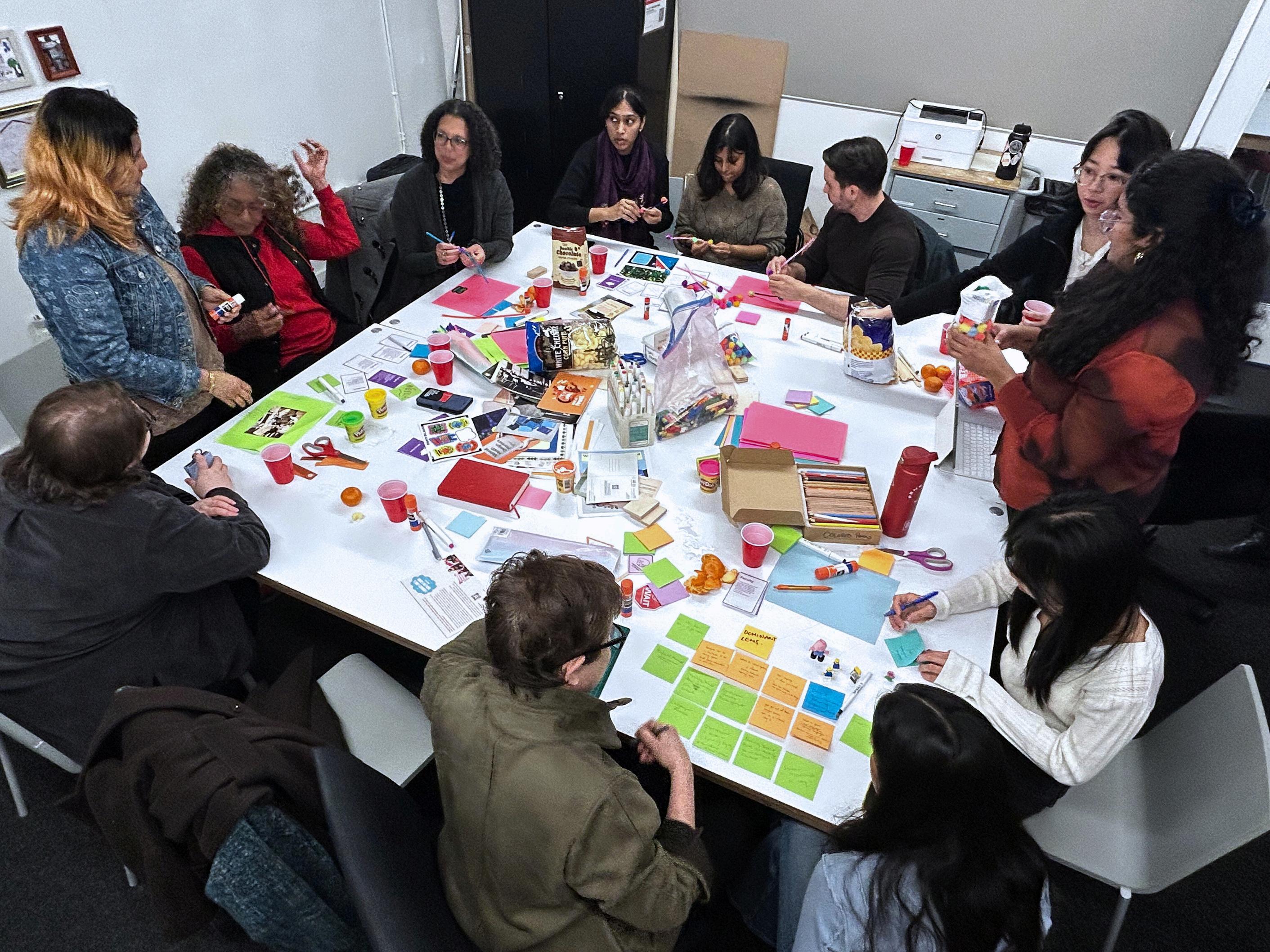

The Commons Project
Ananaya Singh
Anupama Krishnan|
Isa Meriales
Polly Xu
Introduction
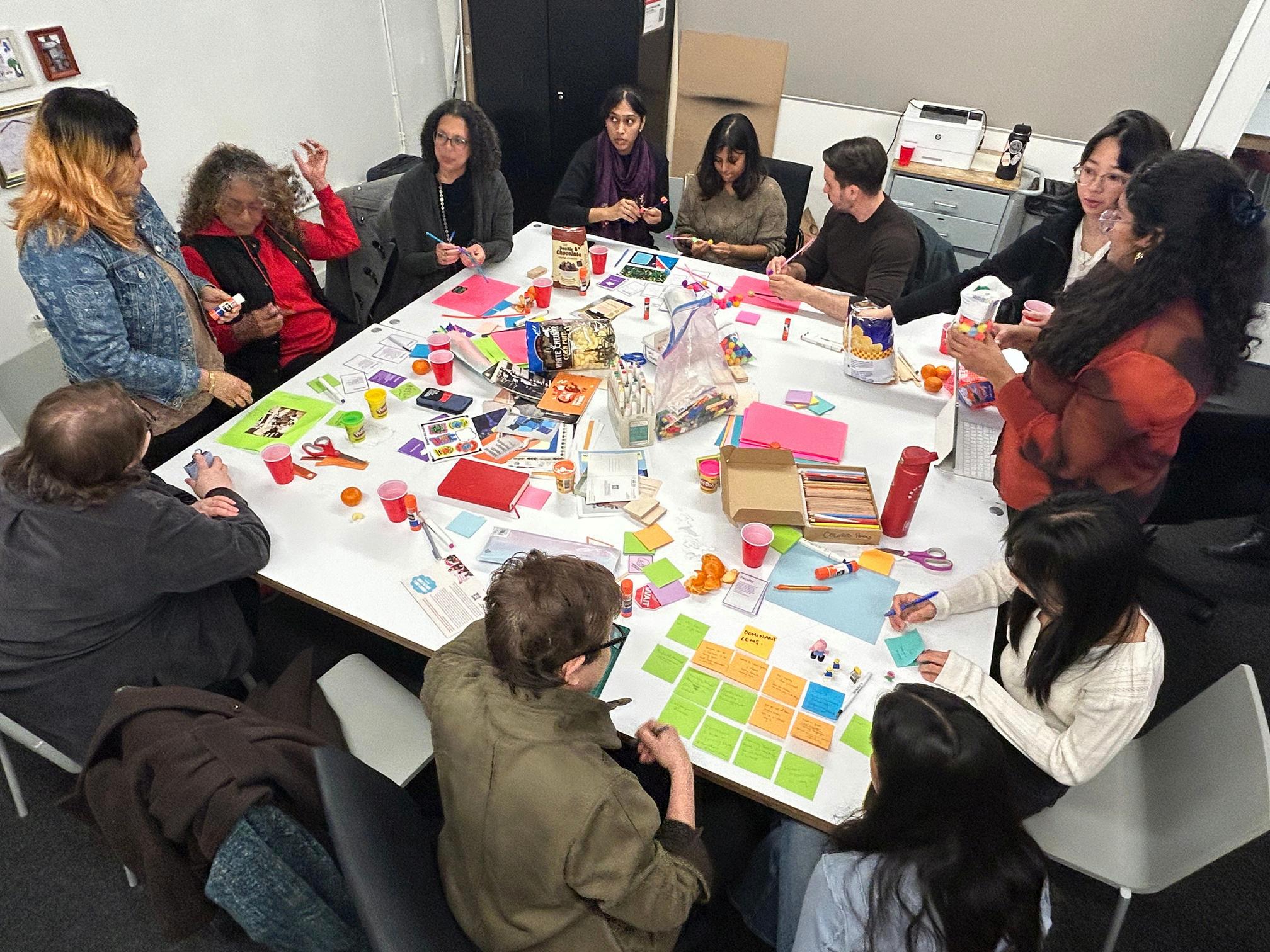
The Commons Project
Commons Project is a research-led initiative that explores how graduate environments can better adapt to students’ diverse c perspectives to foster more reciprocal, trust-based r between students and faculty. Born out of a deep recognition that academic spaces through dominant cultural frameworks, this project in often-unspoken gaps in trust, inclusion, and relation within higher education—particularly among interna and their instructors.

In the project, we take a look at higher education, focusing on trust as a guiding lens.
The Research
In this section we discuss the research methodology and learnings that inform the project.

Literature Review Async Responses Faculty Interviews Expert Interviews Student Interviews Participatory Workshops
Articles & Publications provided foundational knowledge. Students Faculty Members Semi Structured Interviews Semi Structured Interviews Semi Structured Interviews Participant Workshops
Theories of Trust
Trust develops rapidly in temporary teams or groups, often based on initial interactions and shared goals rather than long term relationships
Trust arises from social networks and the norms of reciprocity within them, facilitating cooperation and collective action
Communities with strong social cohesion and mutual trust among residents are more effective in achieving common goals and maintaining social order.
The Commons Project
Experimental Findings
Trust in education is influenced by four interconnected elements: generalized trust, educational governance, educational settings, and educational attainment.
Social proximity affects trust and trustworthiness between participants
Reference, Zhu, Exploring the Role of Trust in Education, Review of Education, 2021
Reference: Glaeser et al., Measuring Trust, NBER Working Paper, 2000.
Literature Review | Experimental Findings
Trustworthiness tended to decline in interactions between individuals of different races or nationalities.
Reference: Glaeser et al., Measuring Trust, NBER Working Paper, 2000.
The Commons Project
Interviews
We had in-depth semi-structured interviews with students, faculty and experts to understand this topic holistically.
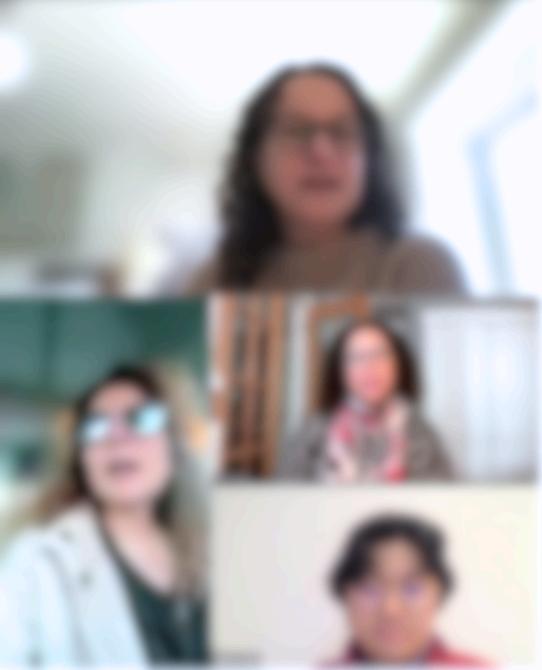
The Commons Project
Overview
Interviews
We conducted in-depth, semi-structured interviews exploring the concept of trust with multiple stakeholder buckets.
Students
MS SDM, Parsons School of Design
MFA TD, Parsons School of Design
MA Media Management , Parsons
School of Design
MS Integrated Marketing, NYU
MS Integrated Design Engineering,
Royal College of the Arts
Faculty Experts
MS SDM, Parsons School of Design
MFA TD, Parsons School of Design
MA Media Management ,
Parsons School of Design
Caitlin Morgan, Senior Director, ELS
Jennifer Rittner, Assistant Dean, Curriculum and Learning
Rita Breidenbach, Associate Provost for Faculty Development
What We Heard
Student
HIERARCHY
Faculty TRUST
LANGUAGE
How Might We
foster reciprocal, trust-based relationships between graduate students and faculty through culturally responsive practices?
Workshops
Once we chose our focus, we developed a series of problem finding and generative workshops to delve deeper into the topic.
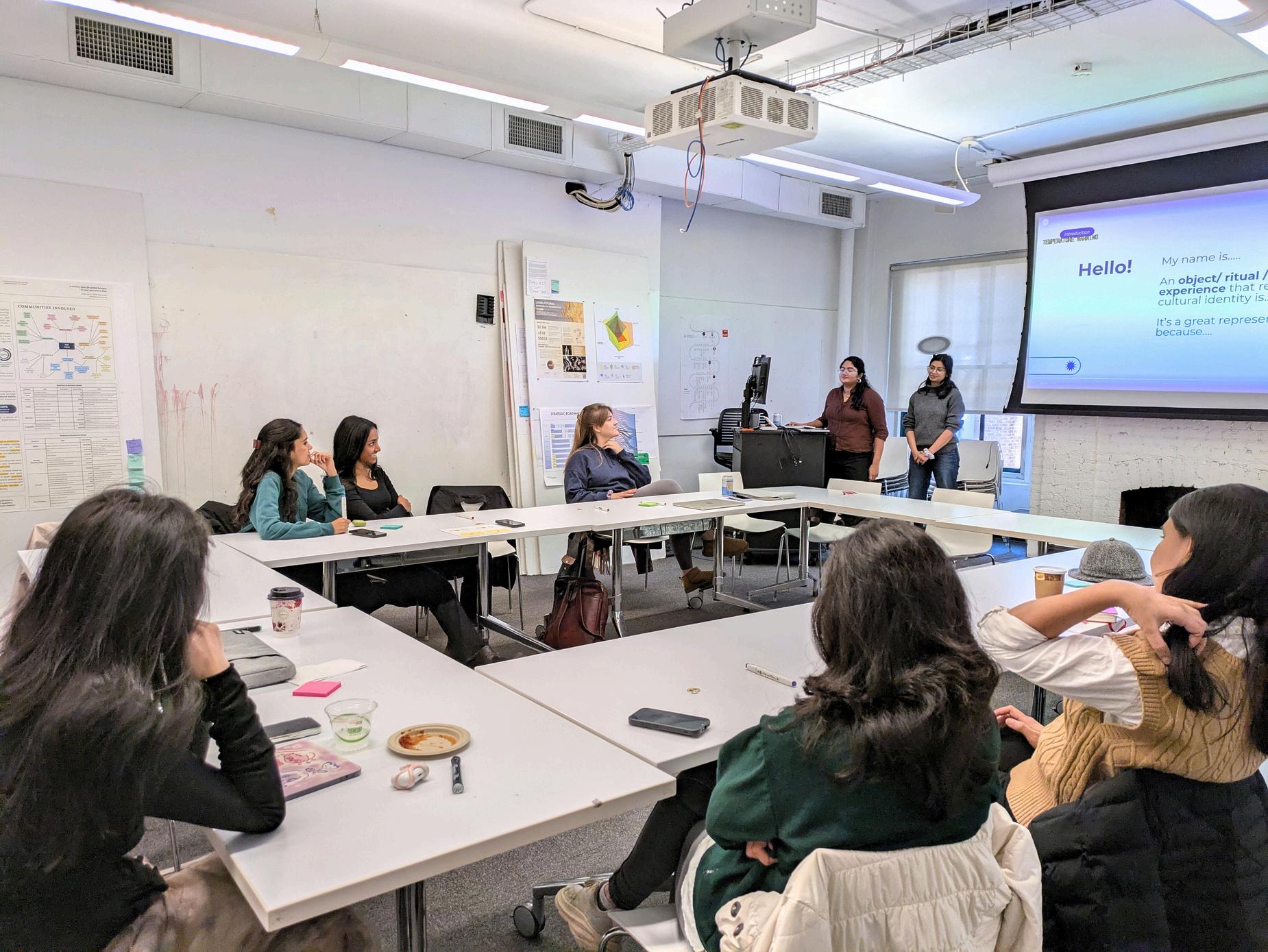
Overview
The team held a series of Problem Finding workshops, and a Generative workshop for ideation at the end. The Commons Project
Workshops
ProblemFindingWorkshops
GenerativeWorkshop
In Person In Person
Async Responses Async Responses
The Commons Project
Workshop 1
Problem-Finding | Students
Goals:
1. Surface specific pain points students have related to cultural identity in academic settings.
2. Reflect on how power, trust, and cultural difference intersect in student-faculty relationships.
6-12 graduate students at TNS
1 Hour
Sticky notes, markers, dot stickers, large paper

Problem-Finding

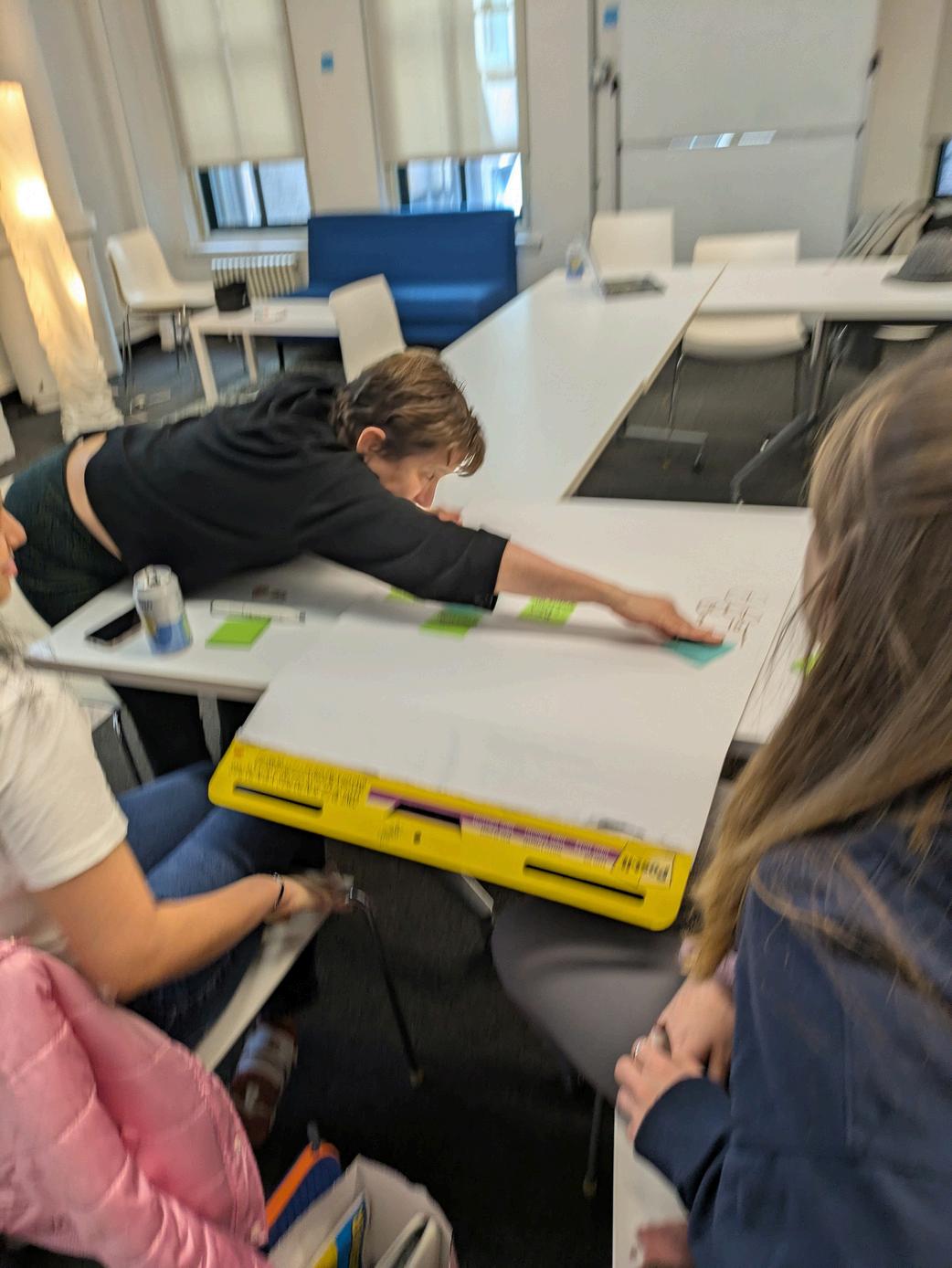

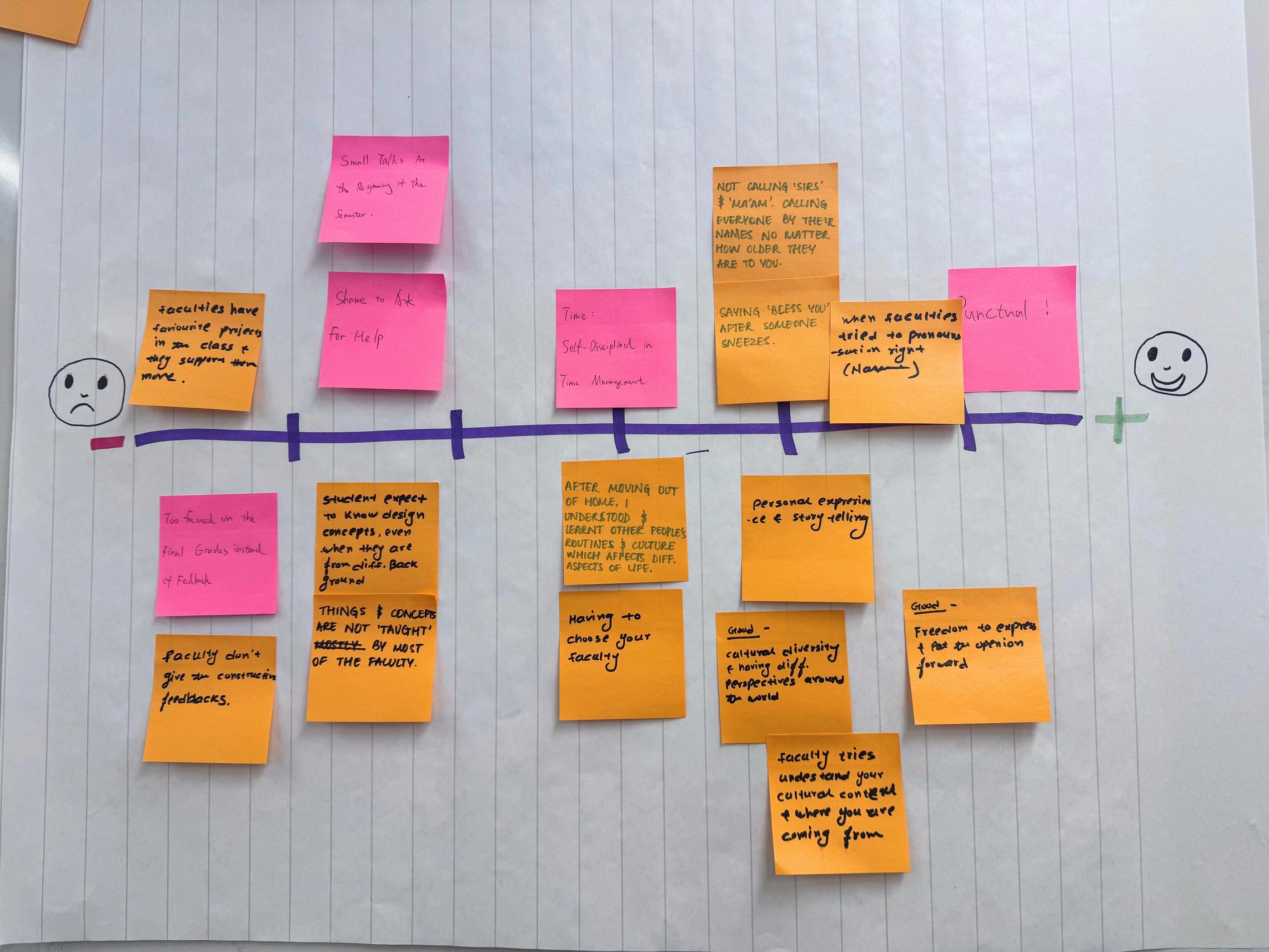
Async Responses
Problem-Finding | Students & Faculty
Goals:
1. Capture initial responses from faculty on student experiences with cultural identity in academic settings
2. Surface key themes of significance to faculty for the cultural aspect of classroom experiences
Student Quote, 2025. The Commons Project
21 graduate students; 4 graduate school faculty members
Asynchronous
Collected audio and text responses from students and faculty
The work done in niche cultures might be under noticed and under appreciated. I don’t know if this kind of work might be needed in the academic space making me fear that even if I work on such a topic, it might be a waste of my efforts. ”
Async Responses
Students

Faculty
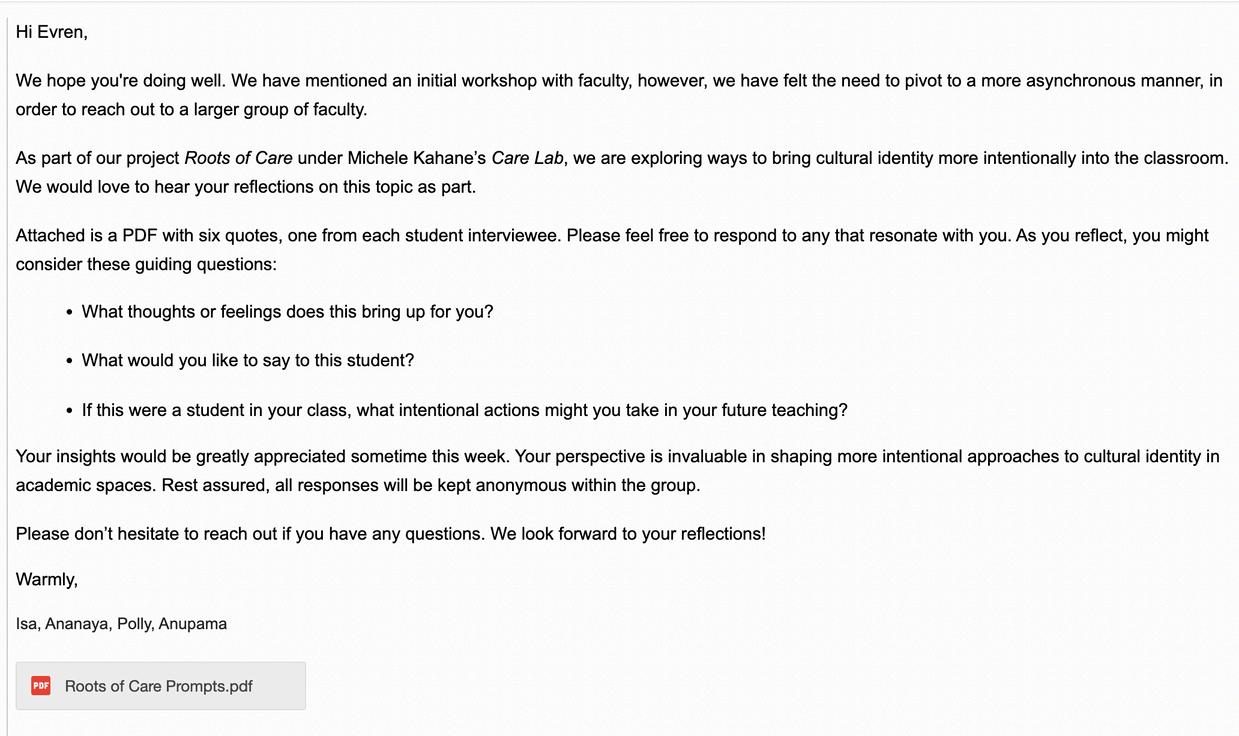
Language Barriers
Go Beyond Fluency
Students who speak English as an additional language often feel left out, misunderstood, or pressured to "perform" Western communication styles.
Western-Centric
Norms Still Dominate
Despite efforts to diversify content, curricula often remain rooted in Western frameworks. Both students and faculty call for curricula that better incorporate global voices and contextual depth.

Cultural Nuance is Often Overlooked
Subcultures and niche contexts can be underappreciated. Students may withhold culturally rich references due to anticipated misunderstandings or the effort required to explain them.
The Commons Project
Workshop 2
Generative | Students & Faculty
Goals:
1. To envision future possibilities and co-create culturally responsive and inclusive learning environments and curricula that enable reciprocal relationships.
4 professors & 6 grduate students at TNS
1.5 Hours
Prompt cards, paper, markers, glue, scissors, Lego, pipe cleaners, play dough, other found objects
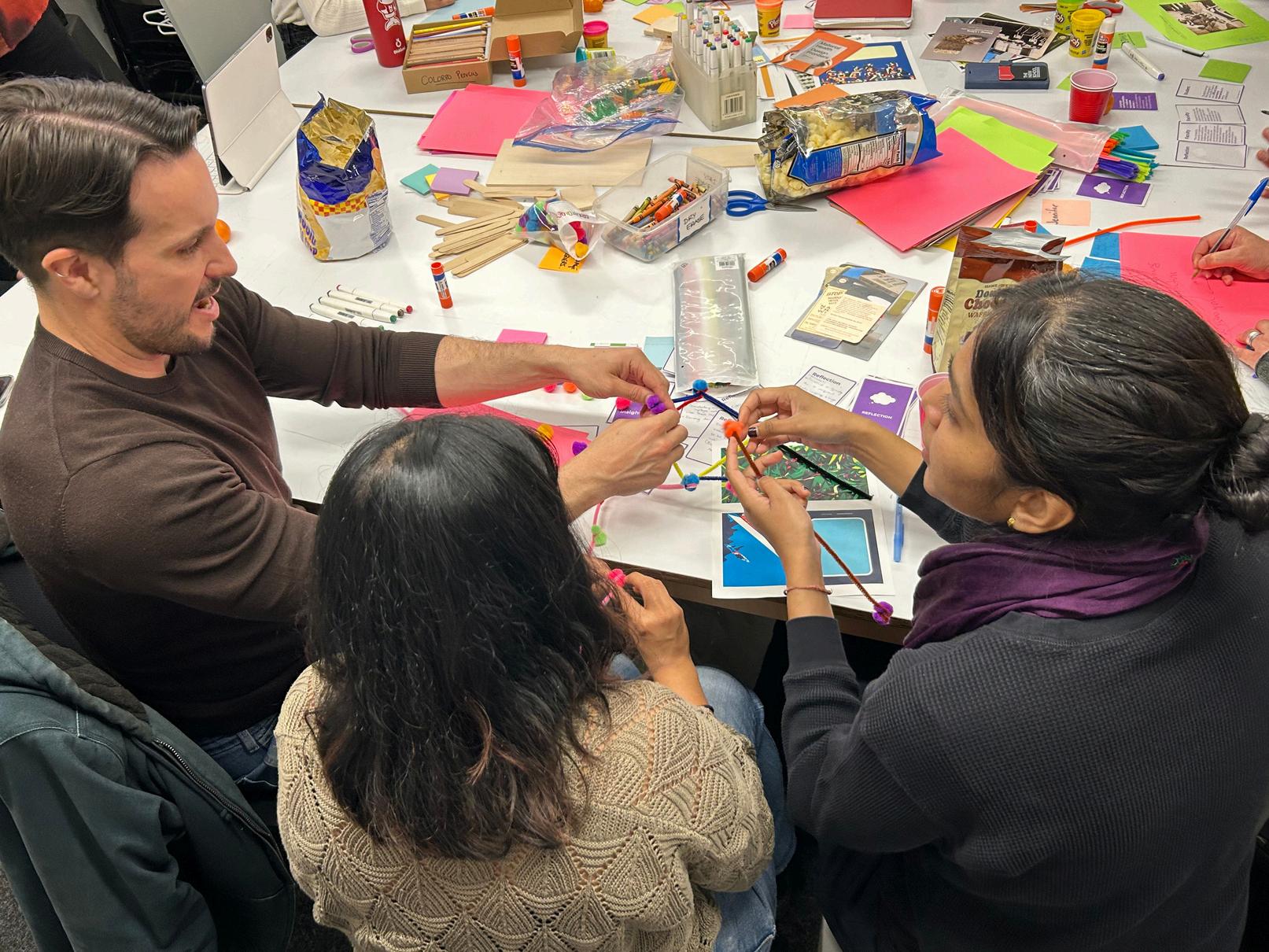
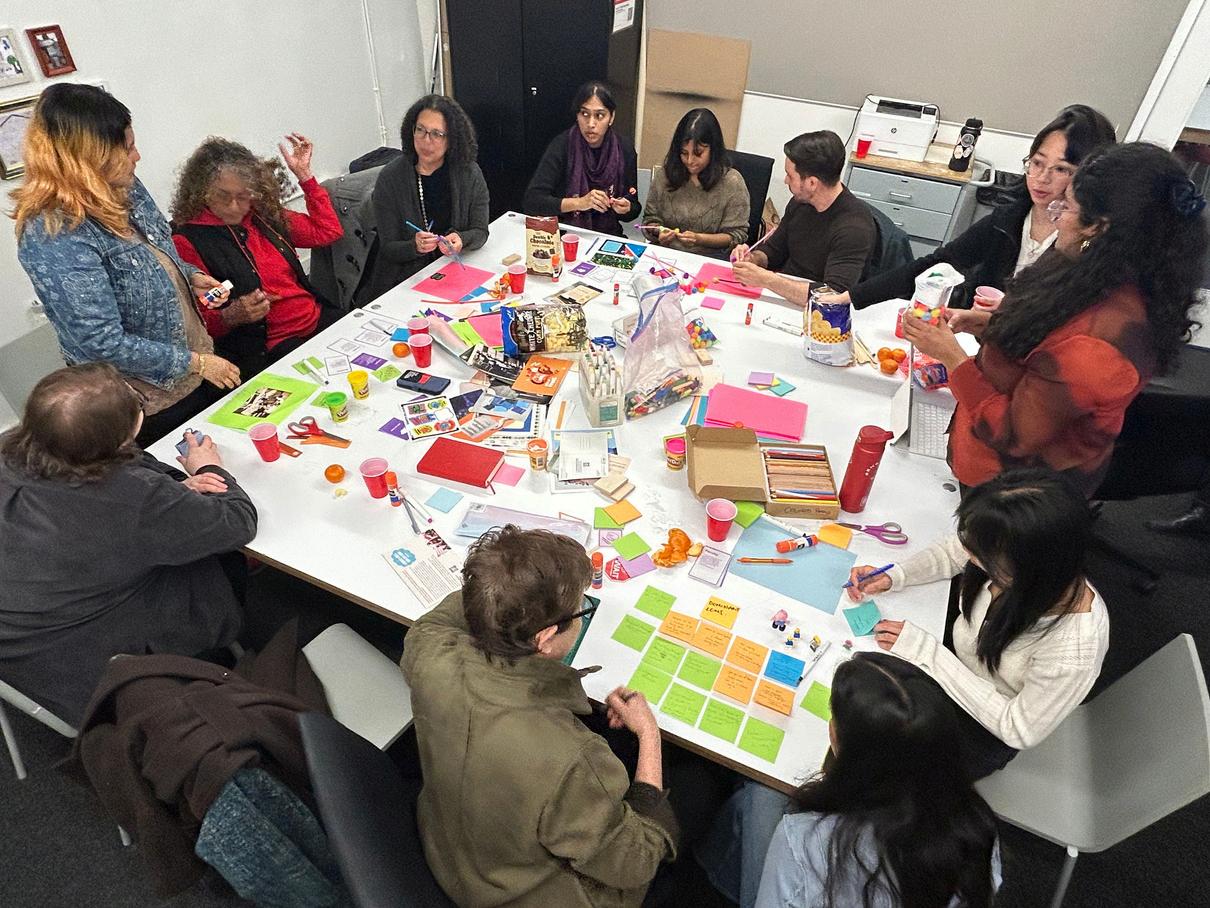

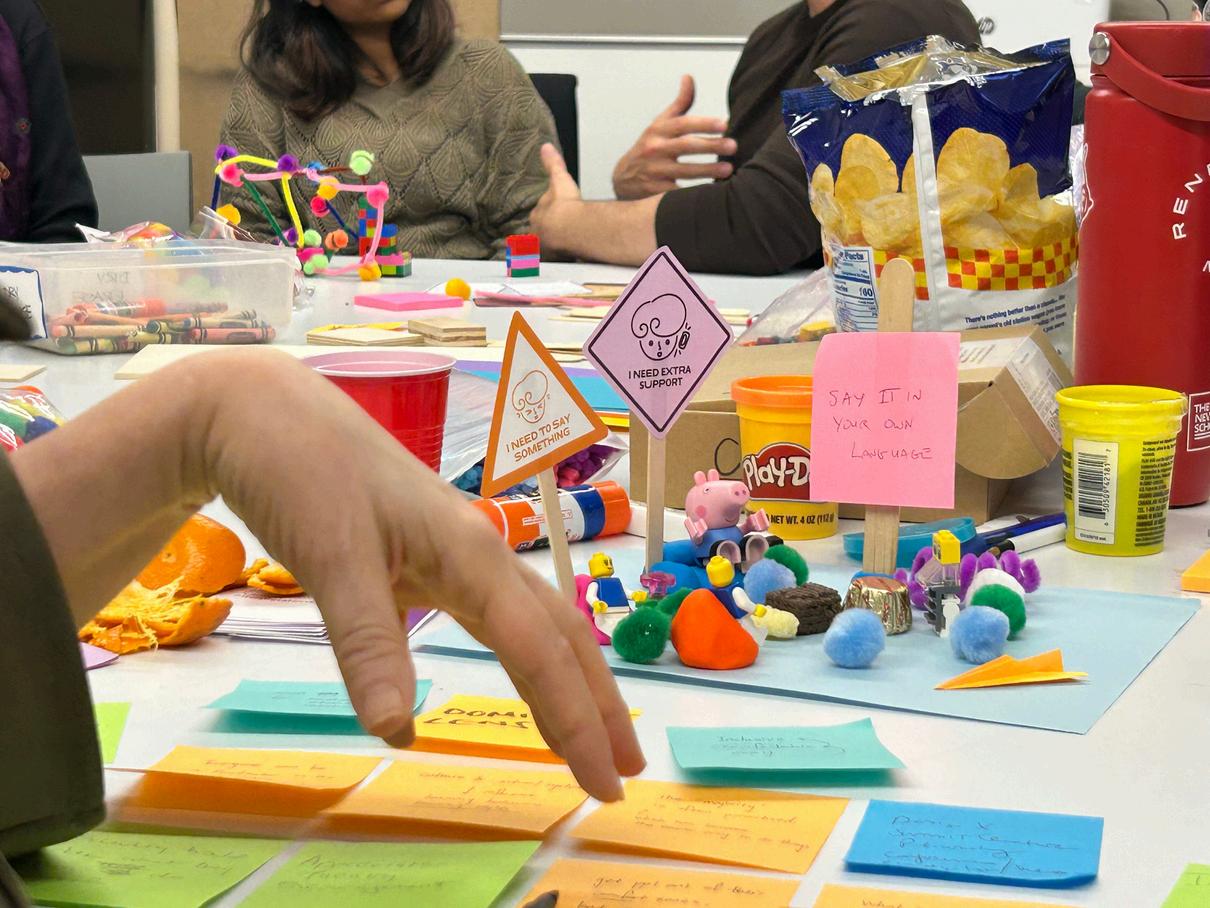
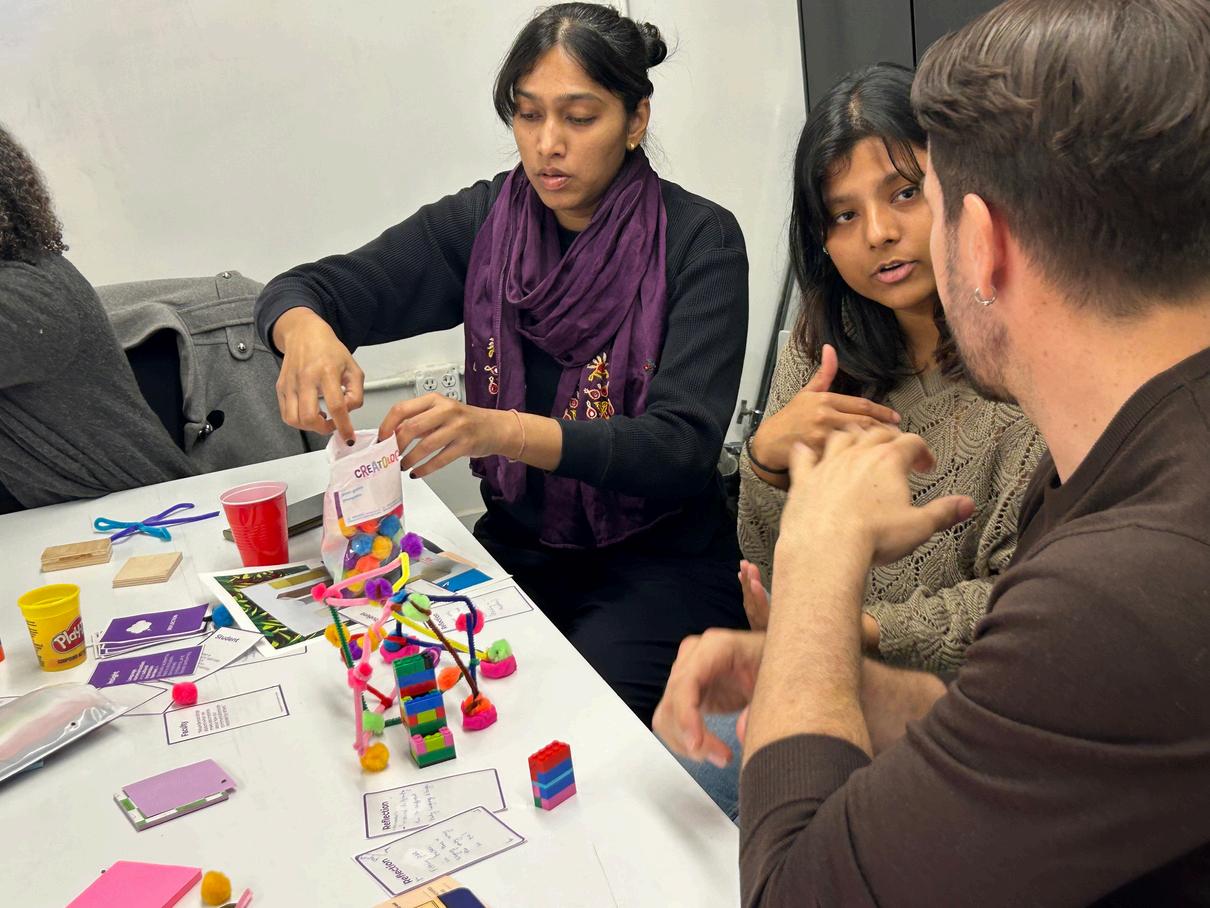


The Commons Project
Synthesis & Opportunity
The team has gathered collective findings voiced from participants, and categorized them into themes.
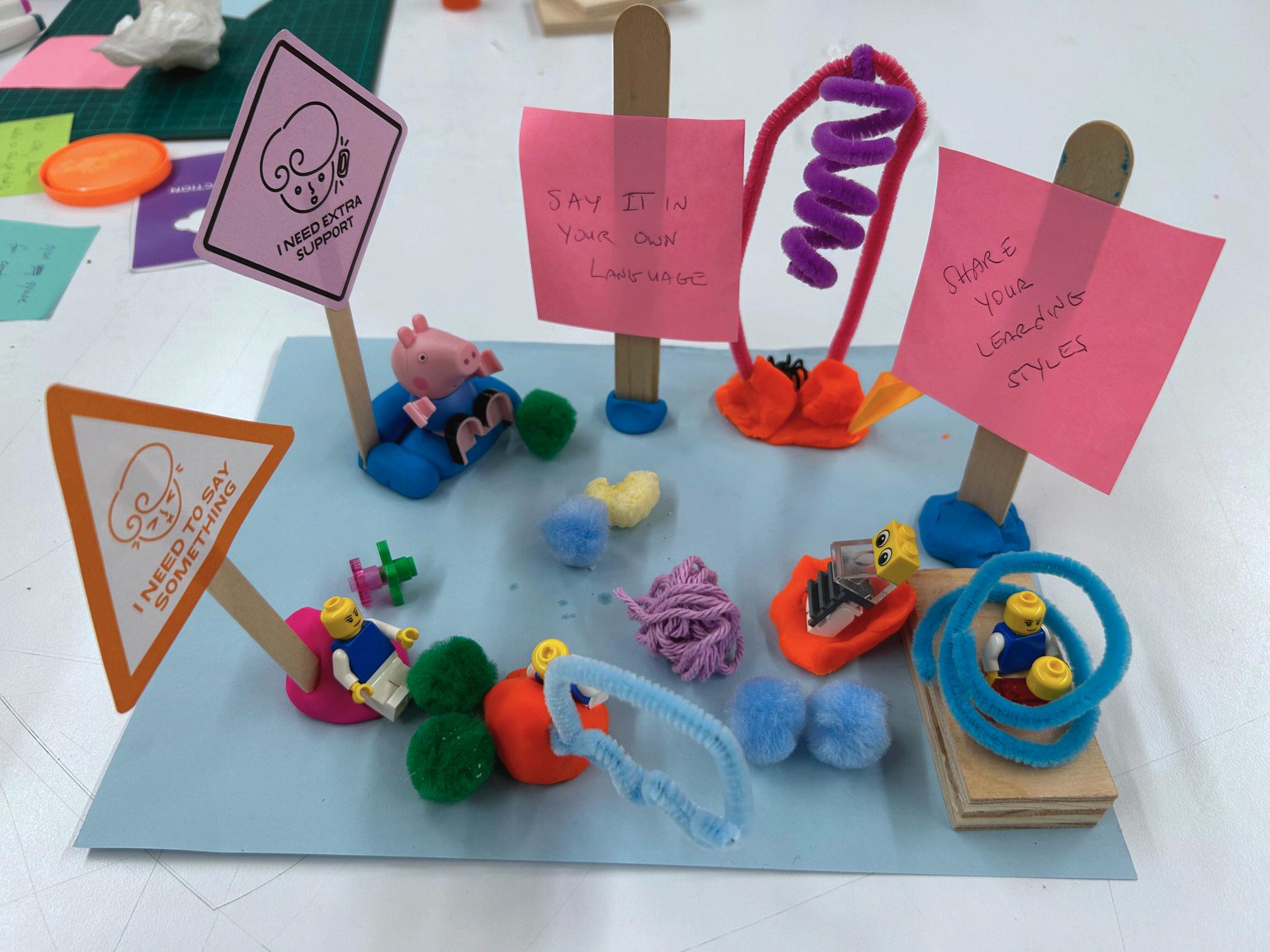
TheDominantLens ObscuresEquity ReciprocityBuildsRelational Infrastructure
Many classrooms operate through invisible dominant norms that alienate international students and limit cultural expression. Intentional reciprocity fosters mutual understanding and trust between students and faculty across cultural divides.
04
FacultyExpertise
=RelationalTrust
Faculty may bring expertise, but without cultural awareness, trust and connection in the classroom remain underdeveloped.
DiverseStudentRealitiesOftenGo Unseen
Graduate students bring varied cultural and academic expectations, which often go unacknowledged in institutional settings.
HIERARCHY
TRUST
CULTURAL NUANCES
LANGUAGE
SPACE TO EXPRESS/ CONNECT/ VOICE
Student Faculty
THOUGHTS OUTSIDE A CLASSROOM
LEARNING STYLES
RECIPROCITY
Archetypes
To begin with our strategy, we mapped four main archetypes that encapsulate the different responses from our project.
Striving Unaware
Passive
Archetypes
Archetypes
Little to no Awareness / Little to no Action
Synthesis & Opportunity
We looked at how creating a space of trust in the academic space involved being responsive and aware, and arranged personas through those two lenses.
Are Aware / Little to No Action
Awareness
Fully Aware / Active
Are Aware / Unsure about Action
Action / Agency
Synthesis | Archetypes
“I separate culture and personality. I try to get to know the student as a person”
“Idon’treallyknow whatitmeansto expressmycultural identityoutsideof howialreadycarry myself.”
Synthesis | Archetypes
“Iseparateculture andpersonality.I trytogettoknow thestudentasa person”
“Idon’treallyknow whatitmeansto expressmycultural identityoutsideof howialreadycarry myself.”
"Thehealthiest ecosystemsthrive ondiversity. IsharehowIthinkwhatyoumakeofit isyourchoice."

"There’s a tendency for the dominant culture to be more visible. It's about naturally defaulting to what's familiar."
"Thehealthiest ecosystemsthrive ondiversity. IsharehowIthinkwhatyoumakeofit isyourchoice."

"There’s a tendency for the dominant culture to be more visible. It's about naturally defaulting to what's familiar."
"Icareandwantto hearstudents’ reflections,butI’m stilllearninghowto createspaceforthat andIdon’tknowhow" I felt like my knowledge only mattered if it was American. I need to adapt better.There is so much knowledge within me that feels underutilised.

Synthesis | Archetypes
"Icareandwantto hearstudents’ reflections,butI’m stilllearninghowto createspaceforthat andIdon’tknowhow"

I felt like my knowledge only mattered if it was American. I need to adapt better.There is so much knowledge within me that feels underutilised.
"Itrytocreateaspace whereallculturesare honored-asking questionslikewhat foodspeopleeatduring celebrations,etc.”
“Readings are limited to the american context. I expressed myself to the faculty and she took it as feedback. It felt nice that she listened.”
"Itrytocreateaspace whereallculturesare honored-asking questionslikewhat foodspeopleeatduring celebrations,etc.”
“Readings are limited to the american context. I expressed myself to the faculty and she took it as feedback. It felt nice that she listened.”
The Commons Project
Intervention
From the key insights, we developed a strategy focused on both the students and faculty.

Theory of Change
TheoryofChange
The Commons Project
Our Two-Pronged Approach
We aim to move through each phase using 2 primary methods :
Workshop Series
Alternate Strategies
The Commons Project
Phase Objective: AwarenessCreation
Build cultural self-awareness and name existing power dynamics in academic spaces.
Workshop
Faculty Student
Recognize how curriculum, expectations, and communication are often rooted in dominant cultural norms.
Identify gaps in representation across syllabi, readings, and participation dynamics.
AltStrategies
Reflect on moments of cultural erasure or affirmation.
Begin to name and validate their own cultural knowledge and classroom experiences. Communication Strategies
Reflective Journal
Quote Gallery Walk
Phase Objective: EmpathyBuilding
Develop empathy and emotional connection with lived cultural experiences different from one's own.
Workshop
Faculty Student
Understand emotional and cognitive impacts of exclusion on students.
Reflect on their own moments of cultural dissonance or privilege.
AltStrategies
Share and listen to diverse cultural narratives.
Develop cross-cultural understanding and solidarity with peers. Cultural Shadowing / Immersion
Phase Objective: ToolkitBuilding
Provide practical strategies and tools to implement inclusive actions.
Workshop
Faculty Student
Diversify readings and assignment formats. Practice inclusive discussion facilitation. Learn ways to validate culturally diverse contributions.
Gain language and tools to express their cultural viewpoints confidently. Practice strategies for navigating and shifting classroom norms.
AltStrategies
Living Resource Bank - Collaborative document with real examples of inclusive assignments, reworded rubrics, diverse reading lists, and student participation options.
Phase Objective: Advocacy
Shift from individual awareness to structural and communal change.
Workshop
Faculty Student
Create accountability networks with peers for long-term inclusion efforts. Commit to mentorship, policy influence, and curriculum redesign.
Form support collectives to sustain voice and advocacy.
Facilitate peer sessions or colead initiatives with faculty.
AltStrategies
Culture Feedback Form“Culture
Check” Peer Reviews
Track department-level progress in representation, engagement practices, and student feedback. Makes inclusion visible, actionable, and measurable over time.
CULTURAL NUANCES
HIERARCHY
LANGUAGE
SPACE TO EXPRESS/ CONNECT/ VOICE
THOUGHTS OUTSIDE A CLASSROOM
LEARNING STYLES
RECIPROCITY
Co-LearningModel
StatusQuo
Separate faculty and students faculty are "trained" as authority figures; students are surveyed or consulted later.
Focus on K–12 or undergrad; graduate dynamics are rarely addressed.
Focus on representation of identities (race, gender, etc.) or bias reduction.
OurModel
Relevance
Brings both groups together as equal participants in a shared space. Tailored for the pressures and politics of grad school. Focuses on whose cultural knowledge counts, how expression is shaped, and how to co-create space for cultural agency.
It builds mutual empathy, flattens hierarchies, and models inclusive learning in real time. Tackles the complex intersection of academic freedom, cultural identity, and marginalization often ignored in typical DEI efforts. It shifts from token inclusion to transforming norms around knowledge, voice, and participation.
Co-LearningModel
StatusQuo
OurModel The Commons Project Intervention
Separate faculty and students faculty are "trained" as authority figures; students are surveyed or consulted later. Focus on K–12 or undergrad; graduate dynamics are rarely addressed.
Focus on representation of identities (race, gender, etc.) or bias reduction.
Relevance
Brings both groups together as equal participants in a shared space. Tailored for the pressures and politics of grad school. Focuses on whose cultural knowledge counts, how expression is shaped, and how to co-create space for cultural agency.
It builds mutual empathy, flattens hierarchies, and models inclusive learning in real time. Tackles the complex intersection of academic freedom, cultural identity, and marginalization often ignored in typical DEI efforts. It shifts from token inclusion to transforming norms around knowledge, voice, and participation.
Co-LearningModel
StatusQuo
OurModel The Commons Project Intervention
Separate faculty and students faculty are "trained" as authority figures; students are surveyed or consulted later.
Focus on K–12 or undergrad; graduate dynamics are rarely addressed.
Focus on representation of identities (race, gender, etc.) or bias reduction.
Relevance
Brings both groups together as equal participants in a shared space. Tailored for the pressures and politics of grad school.
Focuses on whose cultural knowledge counts, how expression is shaped, and how to co-create space for cultural agency.
It builds mutual empathy, flattens hierarchies, and models inclusive learning in real time. Tackles the complex intersection of academic freedom, cultural identity, and marginalization often ignored in typical DEI efforts. It shifts from token inclusion to transforming norms around knowledge, voice, and participation.
StatusQuo
Co-LearningModel
Separate faculty and students faculty are "trained" as authority figures; students are surveyed or consulted later.
Focus on K–12 or undergrad; graduate dynamics are rarely addressed.
Focus on representation of identities (race, gender, etc.) or bias reduction.
OurModel
Relevance
Brings both groups together as equal participants in a shared space.
Tailored for the pressures and politics of grad school. Focuses on whose cultural knowledge counts, how expression is shaped, and how to co-create space for cultural agency.
It builds mutual empathy, flattens hierarchies, and models inclusive learning in real time. Tackles the complex intersection of academic freedom, cultural identity, and marginalization often ignored in typical DEI efforts. It shifts from token inclusion to transforming norms around knowledge, voice, and participation.
StatusQuo
Separate faculty and students faculty are "trained" as authority figures; students are surveyed or consulted later.
Focus on K–12 or undergrad; graduate dynamics are rarely addressed.
Focus on representation of identities (race, gender, etc.) or bias reduction.
OurModel
Relevance
Brings both groups together as equal participants in a shared space. Tailored for the pressures and politics of grad school.
Focuses on whose cultural knowledge counts, how expression is shaped, and how to co-create space for cultural agency.
It builds mutual empathy, flattens hierarchies, and models inclusive learning in real time. Tackles the complex intersection of academic freedom, cultural identity, and marginalization often ignored in typical DEI efforts. It shifts from token inclusion to transforming norms around knowledge, voice, and participation.
StatusQuo
Separate faculty and students faculty are "trained" as authority figures; students are surveyed or consulted later.
OurModel
Relevance
Focus on K–12 or undergrad; graduate dynamics are rarely addressed. Focus on representation of identities (race, gender, etc.) or bias reduction.
Brings both groups together as equal participants in a shared space. Tailored for the pressures and politics of grad school.
Focuses on whose cultural knowledge counts, how expression is shaped, and how to co-create space for cultural agency.
It builds mutual empathy, flattens hierarchies, and models inclusive learning in real time. Tackles the complex intersection of academic freedom, cultural identity, and marginalization often ignored in typical DEI efforts. It shifts from token inclusion to transforming norms around knowledge, voice, and participation.
Co-LearningModel
StatusQuo
Separate faculty and students faculty are "trained" as authority figures; students are surveyed or consulted later.
OurModel
Brings both groups together as equal participants in a shared space.
Focus on K–12 or undergrad; graduate dynamics are rarely addressed.
Focus on representation of identities (race, gender, etc.) or bias reduction.
Tailored for the pressures and politics of grad school. Focuses on whose cultural knowledge counts, how expression is shaped, and how to co-create space for cultural agency.
Relevance
It builds mutual empathy, flattens hierarchies, and models inclusive learning in real time.
Tackles the complex intersection of academic freedom, cultural identity, and marginalization often ignored in typical DEI efforts. It shifts from token inclusion to transforming norms around knowledge, voice, and participation.
Co-LearningModel
StatusQuo
Separate faculty and students faculty are "trained" as authority figures; students are surveyed or consulted later.
OurModel
Focus on K–12 or undergrad; graduate dynamics are rarely addressed.
Focus on representation of identities (race, gender, etc.) or bias reduction.
Brings both groups together as equal participants in a shared space. Tailored for the pressures and politics of grad school. Focuses on whose cultural knowledge counts, how expression is shaped, and how to co-create space for cultural agency.
Relevance
It builds mutual empathy, flattens hierarchies, and models inclusive learning in real time. Tackles the complex intersection of academic freedom, cultural identity, and marginalization often ignored in typical DEI efforts. It shifts from token inclusion to transforming norms around knowledge, voice, and participation.
Co-LearningModel
StatusQuo
Separate faculty and students faculty are "trained" as authority figures; students are surveyed or consulted later.
OurModel
Focus on K–12 or undergrad; graduate dynamics are rarely addressed.
Focus on representation of identities (race, gender, etc.) or bias reduction.
Brings both groups together as equal participants in a shared space. Tailored for the pressures and politics of grad school. Focuses on whose cultural knowledge counts, how expression is shaped, and how to co-create space for cultural agency.
Relevance
It builds mutual empathy, flattens hierarchies, and models inclusive learning in real time. Tackles the complex intersection of academic freedom, cultural identity, and marginalization often ignored in typical DEI efforts. It shifts from token inclusion to transforming norms around knowledge, voice, and participation.
Next Steps
Lenses to Consider
01
Scalablility
How does our project expand its reach or impact across contexts and geographies?
02
03
Sustainability
How does the project remain viable and relevant over time economically,environmentally, and socially?
Resiliency
How may the project withstand disru i and adapt to unexpected ch
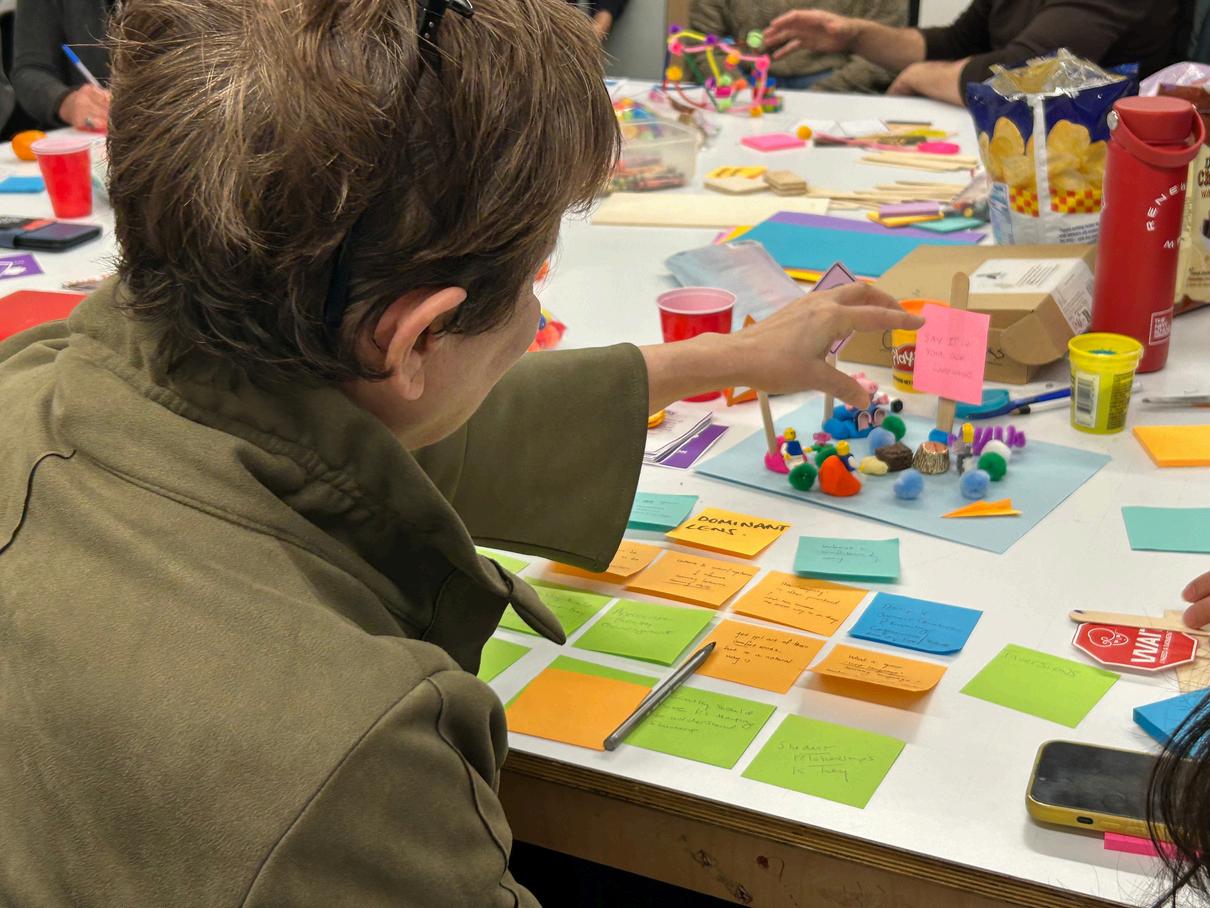
The Commons Project
Thank You
What is your most valuable learning from this project?
What would you like to learn more about?
What gaps do you see?
Ananaya | Anupama | Isa | Polly
